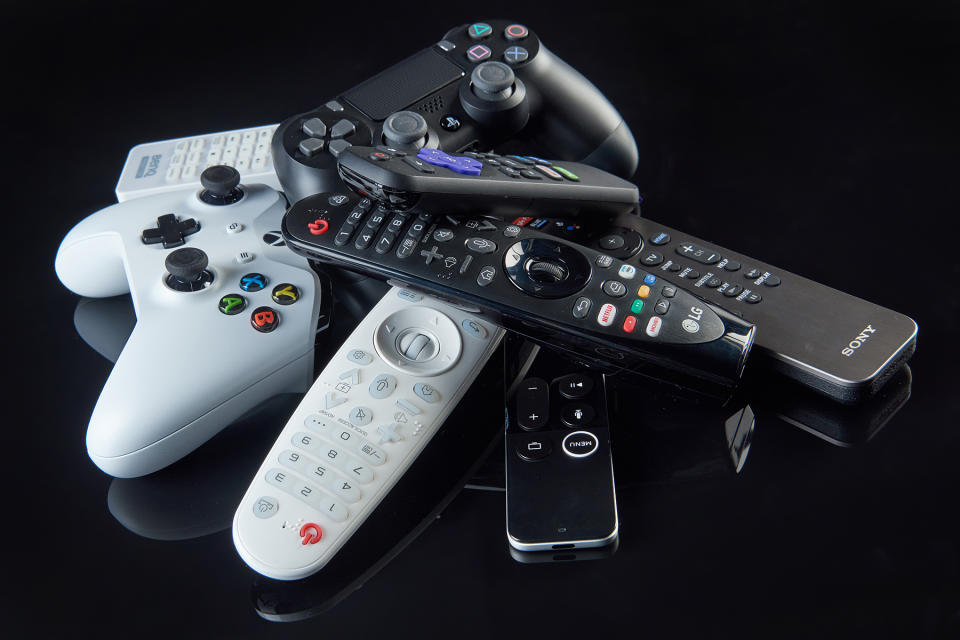How and why to buy a projector in 2019
Bring the silver screen to your home on the cheap.
A 100-inch 4K screen? To get that the usual way you might be looking at paying close to six figures. Luckily, there's another option that can get you even more, up to a 150-inch screen for a fraction of that price. Yes, film aficionados are increasingly turning their attention toward home theater projectors.
You may think of projectors as either expensive, dim or janky, but with the latest technology, that's all changed. It's possible nowadays to find reasonably bright 4K HDR projectors with near theater-quality images for $1,500 or less. Before you start running to the store for popcorn, it's important to learn a few things and beware of the pitfalls, so we're here to help.
The technology
Most consumer projectors use two types of technology: LCD and DLP. For each, the light source is usually a simple lamp, but some higher-end LCD and DLP projectors are powered by lasers. In any case, LCD and DLP use fundamentally different technology, and there are some strong advantages and drawbacks with each.
LCD: Inside a modern LCD home theater projector, a powerful light source is split into red, green and blue beams by a series of mirrors. The colors then pass through three LCD screens containing the movie or whatever else you're watching, letting only the relevant parts of the image through. Those color channels, each containing the image, then converge in a prism and pass through the projector's lens.
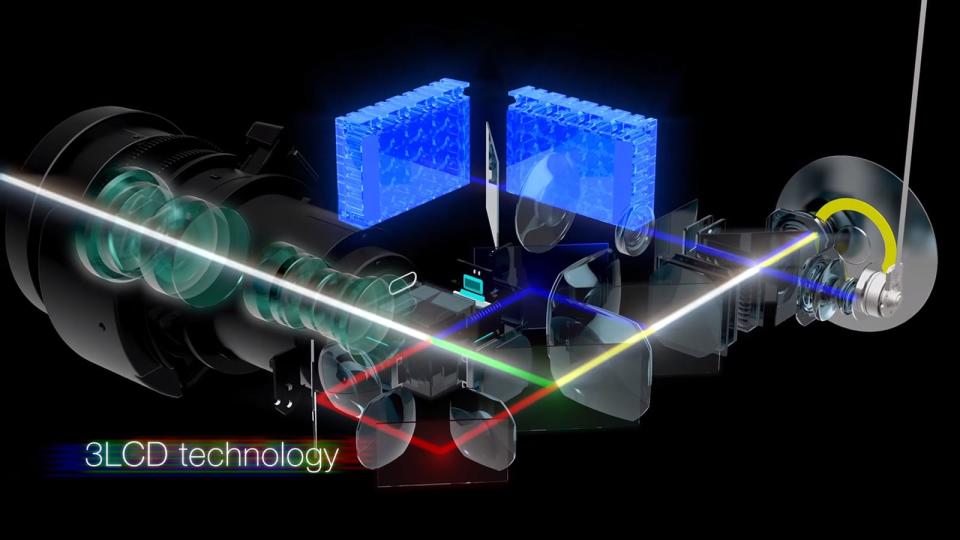
Though most manufacturers use DLP projector tech, Epson has largely stuck with its 3LCD system on its Home Cinema 5050UBe 4K Pro and other models. Sony, Sanyo and others also produce LCD projectors.
LCD projectors usually beat DLP models in the area of sharpness, efficiency and color accuracy. However, they tend to have lower contrast ratios, are bulkier and can experience image degradation and dead pixels over time. In addition, 4K LCD projectors tend to be more expensive than equivalent DLP projectors at the moment.
DLP: DLP projectors have some very out-there technology. They use an optical semiconductor called a digital micromirror device (DMD) that contains millions of aluminum mirrors. Those tiny mirrors can actually move, tilting either toward the light source (on) or away from it (off) at up to 5,000 times per second.
Most DLP projectors use a single chip, so they need a color wheel to filter the light into red, green and blue. Six-segment wheels with repeating primary colors (RGBRGB) have the best color accuracy, while four-segment wheels with the primary colors and white (RGBW) tend to be brighter.
DLP projector manufacturers include Optoma, LG, BenQ and Panasonic. The benefit of DLP tech is portability, high contrast, less fringing and cheaper projectors, particularly when it comes to 4K. DLP projectors also tend to have less lag between the image and signal, so they're generally better for gaming.
The biggest issue with DLP is the so-called rainbow effect. Because of the spinning color wheel, some viewers tend to see bright, rainbow-hued artifacts, particularly if they look away from the image suddenly. However, the problem affects some people more than others (personally, it doesn't bother me at all). Cinema-grade DLP projectors usually use 3 separate chips, one each for red, green and blue. That eliminates the color wheel and its rainbow effect altogether.
Projectors compared to TVs
There are some drawbacks and inconveniences for projectors compared to TVs. If you anticipate those and adjust your attitude accordingly, however, you'll get amazing benefits not available to any TV owner.
First off, projectors reflect light off a screen, while TVs emit their own light. Those screens (or walls) reduce the brightness compared to a TV and reflect other light sources, so projectors don't work very well in the daytime or with ambient light.
While some bright projectors like BenQ's 3,000 lumen TK800 ($1,099) can handle some daylight, the image will look washed out compared to a TV. So for best results, you'll want to use a projector in a darkened room. Even then, you won't get blacks as good as a QLED or OLED TV.
Projectors take time to warm up and shut down, so you can't just start one up and go. Unlike TVs, few projectors have decent built-in sound, so you'll need a sound system of some kind. Most projector lamps have a lifespan in the neighborhood of 4,000-6,000 hours, so if you watch TV for three hours a day, you'll need to replace the bulb in as little as three and a half years. Those can cost up to $250.

You can use a white wall, but for best results, you'll need to buy a screen. You can find a decent, cheap pull-down model on Amazon for less than $100, but for the sake of convenience, you'll want to spend $200-600 for a motorized screen with decent reflectivity. The higher the reflectivity, the brighter the image. You'll also need a fairly large room. While projectors and screens take up very little space when ceiling mounted, you need to be a decent distance from a large screen to get the maximum benefit.
On the plus side, many projectors, even inexpensive ones, will let you blow up the image to 200 inches. Obviously, that gives you a lot more screen size for your dollar. Lots of inexpensive home theater models support 4K and HDR, and those things are more beneficial, and noticeable, when projected to a very large size.
What to look for
When choosing a projector, you'll first need to decide how much to spend. With that figure firmly in mind, you can then shop for a projector with the features you want.
Here are some of the key buzzwords:
Brightness in lumens: Home theater projectors generally range in brightness between 2,000 to 3,000 lumens. However, you'll need to take those figures with a grain of salt. While some models might hit 3,000 lumens or more, cranking the lamp to that level might hurt the image quality and hurt the lifespan of your bulb. Also, some manufacturers tend to exaggerate maximum brightness by 25 percent or more.
Color accuracy: One of the big advantages of projectors is that they generally deliver 10-bit (one billion) colors, HDR10 for cinema and its broadcast equivalent, HLG. That's ideal for cinephiles who want to see content the way the creators intended, particularly since HDR isn't overcooked (too saturated) on projectors like it often is on TVs.
Good projectors can deliver 95 percent or more of the advanced DCI-P3 color gamut, and some even hit 75 percent of the demanding Rec.2020 color space. These figures are generally well above what most 4K TVs can do. Some projector manufacturers, most notably BenQ, will provide color reports showing "Delta E," the difference between a projector's measured colors and a baseline standard.
Mounting and fan noise: Usually, it's desirable to mount a projector on the ceiling to save space, so budget for a mounting bracket and any necessary long cables (don't forget about extra power for Google's finnicky Chromecast). Also, keep in mind that it's easier to mount a lightweight projector, and DLP models are usually lighter than those with LCD tech. If a ceiling mount isn't possible, most projectors can be placed on the floor and some are mainly designed for that, like LG's eccentric $2,800 HU80KA.

Some projectors are noisier than others, and usually the more you spend, the less noise you get. Many of the new 4K DLP projectors, when operating in 4K mode, are particularly noisy. There's one other (cool) thing: if your projector is easy to take down and put up, you can it take outside for magical night screenings under the stars.
Resolution and HDR: Yes, there are some inexpensive 4K projectors out there, but it's important to understand how they work. Many BenQ, Optoma and other DLP projectors use the latest .47-inch DLP chips from Texas Instruments. Those have 1080p and not true 4K native resolution, which would drastically increase projector costs (imagine eight million tiny mirrors instead of two million).
However, the BenQ HT3550 ($1,499), for one, uses a technique called "pixel shifting" that emits each pixel four times while moving it to the correct position for a 4K image. It does all that in less than 1/60th of a second. So, while it doesn't have a native 4K chip, it puts as many pixels on the screen in the same amount of time as a 4K native projector. That makes it 4K in most people's books, and visually, it performs nearly as well.
On the other hand, Epson's LCD projectors also have 1080p native resolution, but the image is just shifted twice, not four times. So, those projectors are not 4K natively or otherwise, but do produce double the resolution of a 1080p projector. If you really want a 4K native projector, two of the cheapest ones are Sony's VPL-VW295ES ($5,000) and JVC's DLA-NX5 ($5,000).
If you'd rather save money and get a 1080p projector, there's good news there. Most models come with HDR10, giving you more colors and dynamic range. To many folks, that's a more important feature than resolution.
Contrast: Contrast ratio is the difference between the darkest black and brightest white parts of an image, and is the quality most noticeable by viewers. It's also the most confusing stat for buyers. Manufacturers might list full on/off contrast, giving you a figure like 150,000 to 1, or quote ANSI contrast, a much smaller number that's calculated in a different way. In any case, neither figure necessarily does justice to the projector's true capabilities -- for that, you need to see a demo in person.
Optics: Depending on the configuration of your home theater, this could be crucial. If you're starving for space, you might need a "short throw" model that can be installed very close to the screen. A good example of this is the $6,000 LG laser CineBeam. If you have a bit more space, a model like the Optoma GT1080 ($600) gaming projector should do.
If you're mounting the projector at a more conventional length (between five and 25 feet), you might need to consider the zoom range and whether the projector has a lens shift option. A decent zoom range will make easier to mount the projector where you want with the screen size that you want.
Lens shift, meanwhile, is used if the projector is mounted higher or lower relative to the screen than recommended by the manufacturer (or any horizontal distance off center). That creates a trapezoidal shaped image, but by dialing in some lens shift, you can optically square it up. Otherwise, you might have to use a "keystone correction," which digitally stretches or shrinks part of the image, resulting in noticeable distortion or pixel artifacts.
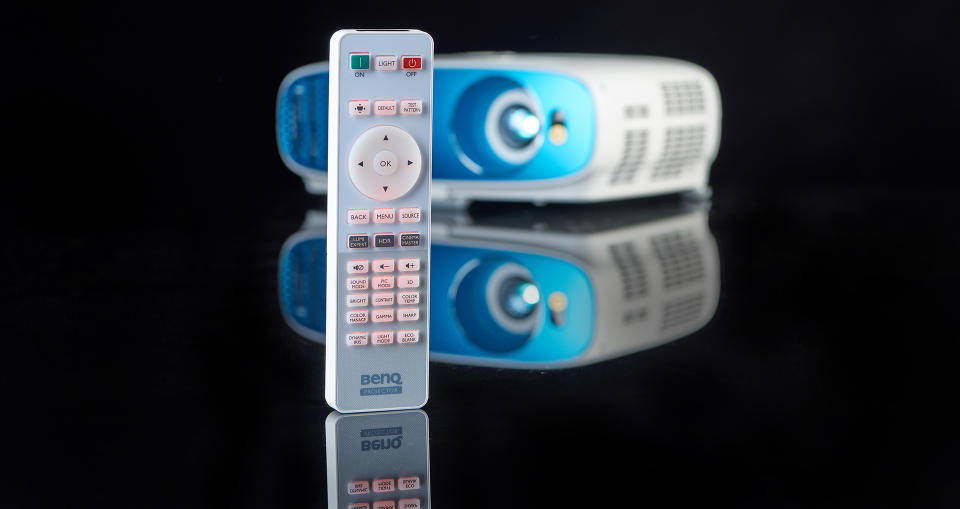
THE BEST PROJECTORS FOR 2019
With all that in mind, here are three models I'd recommend in three different street price categories: under $1,000, under $2,000, and under $6,000. By comparing features, you should be able to find one that fits your budget and needs.
Under $1,000: ViewSonic PX727-4K

If you're looking for 4K on a budget, the answer is ViewSonic's PX7274K. At less than $1,000, it packs a TI 0.47-inch 4K DLP chipset, delivering 4K worth of pixels to your screen, good contrast and accurate colors, especially with HDR mode enabled. You can't have everything, though, and like other DLP 4K projectors with the same chip, the PX727-4K projects a dark, square light band around the image. It also has no 3D option and poor built-in audio quality.
ViewSonic PX727-4K on Amazon - $1,000
Under $1,000: Optoma HD143X
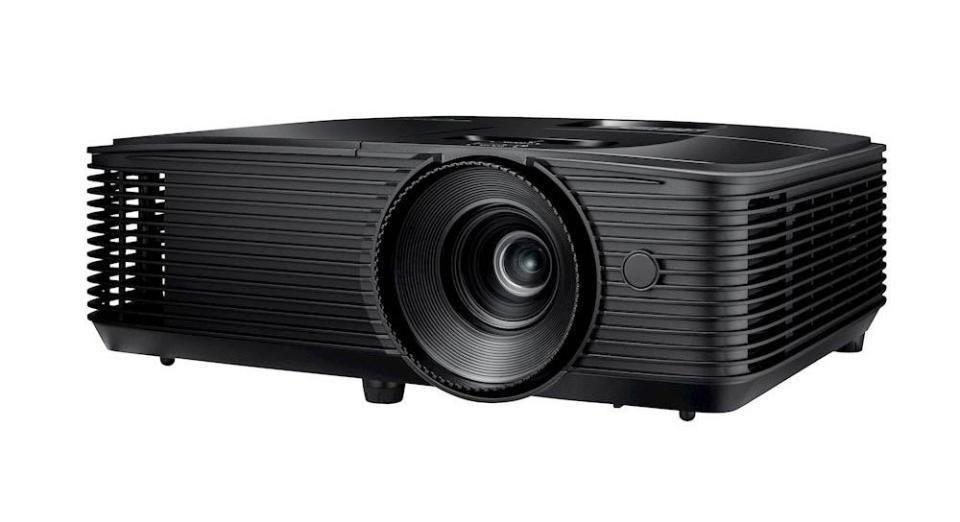
If budget is your main concern, the 1080p Optoma HD143x delivers a surprisingly good image. It features decent 3000 lumen brightness, HDR and even 3D, all for less than $500. You'll need to make sure your theater room is well suited for it, however, as there's very little optical zoom (1.1x) and no lens shift option.
Optoma HD143X on Amazon - $431
Under $1,000: BenQ HT2050A
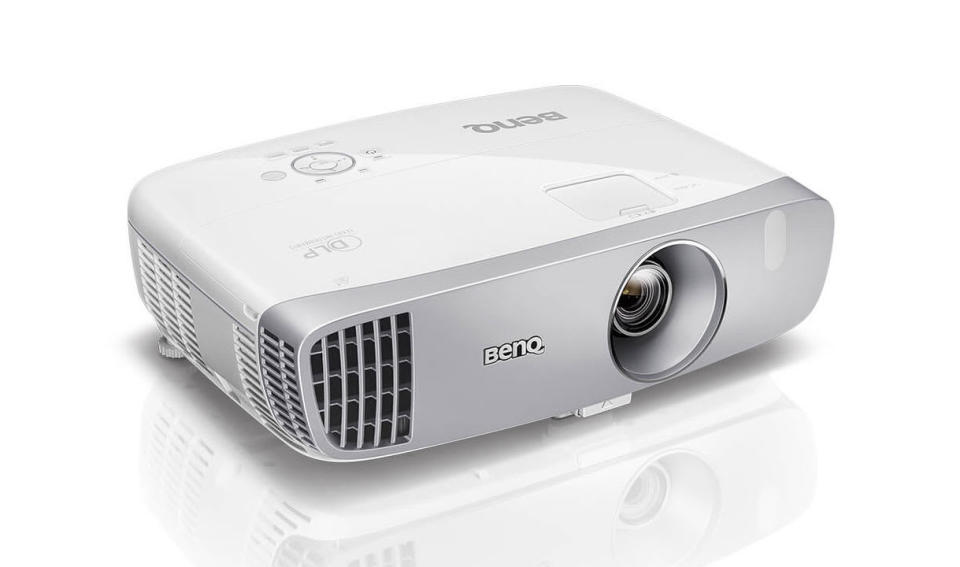
For around $700, the BenQ HT2050A is the best budget 1080p projector. It delivers where it counts with the best contrast (ANSI 1,574:1) and color accuracy in its class, and is surprisingly bright as well, with 2,200 lumens in "vivid" mode. On top of that, it comes with a 1.3x zoom and vertical lens shift option for maximum installation flexibility. The drawbacks include slightly excessive fan noise, rainbow effect and red-tinted 3D.
Under $2,000: BenQ HT3550
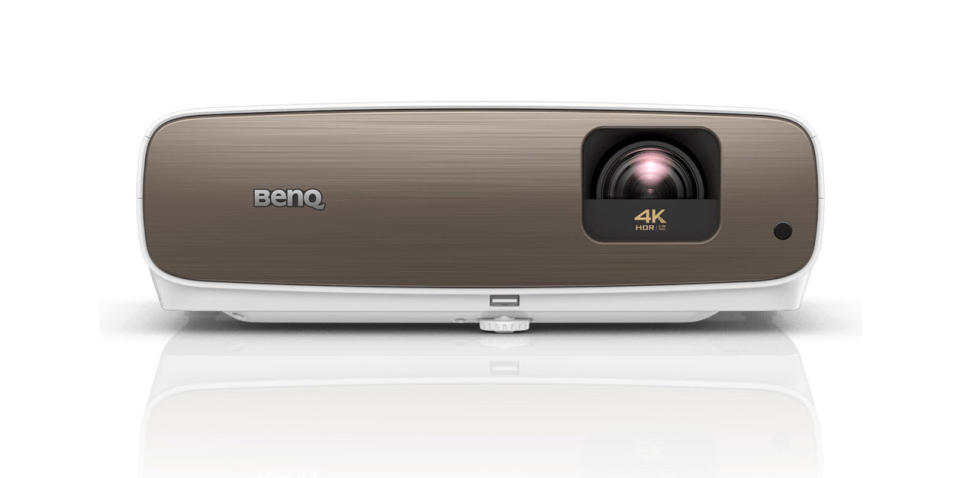
Last year, I reviewed BenQ's 4K HT2550 and gave it a good mark, but it had several flaws, including high sound levels and annoying light bands. Its successor, the HT3550, fixes most of those things and improves on others. It delivers reference-quality 4K color reproduction in both HDR and SDR that's a match for projectors costing triple the price. Contrast is excellent thanks to a new dynamic iris, while brightness is a decent 2,000 lumens. It has a 1.3x zoom and vertical lens shift option, plus a surprisingly good built-in speaker. The fan noise is still present, but less than before.
BenQ HT3550 on Amazon - $1,500
Under $2,000: Sony VPL-HW45ES
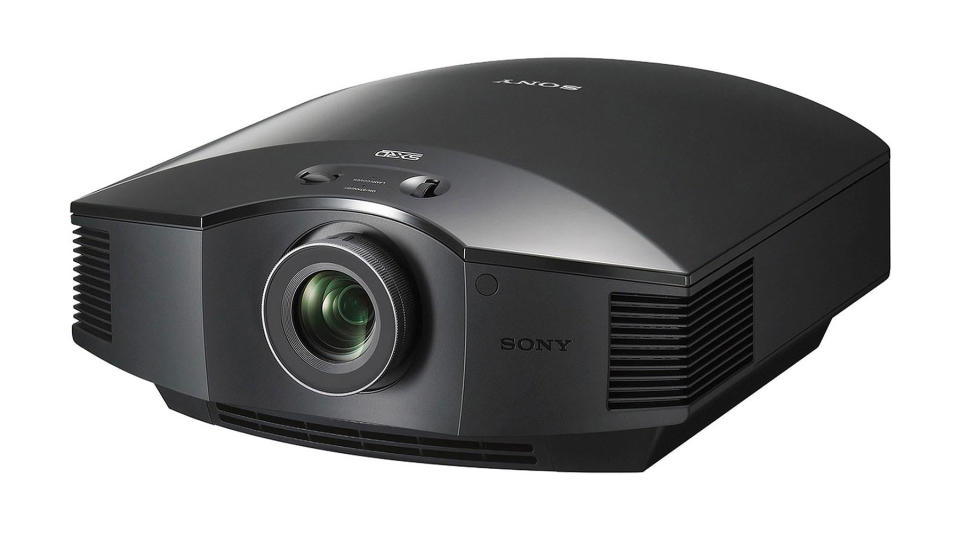
If 4K isn't a great concern for you, then Sony's $1,500 VPL-HW45ES projector delivers the best image quality in this price range. Using Sony's SXRD tech that's a hybrid between LCD and DLP, it delivers amazing contrast and color accuracy, with decent 1,800 lumen brightness. It's also a great projector for gamers, thanks to the very low (for a projector) 22-millisecond input lag. Finally, you get incredible installation flexibility via a 1.6x zoom lens and both horizontal and vertical lens shift.
Sony VPL-HW45ES on Amazon - $1,798
Under $2,000: BenQ TK800M
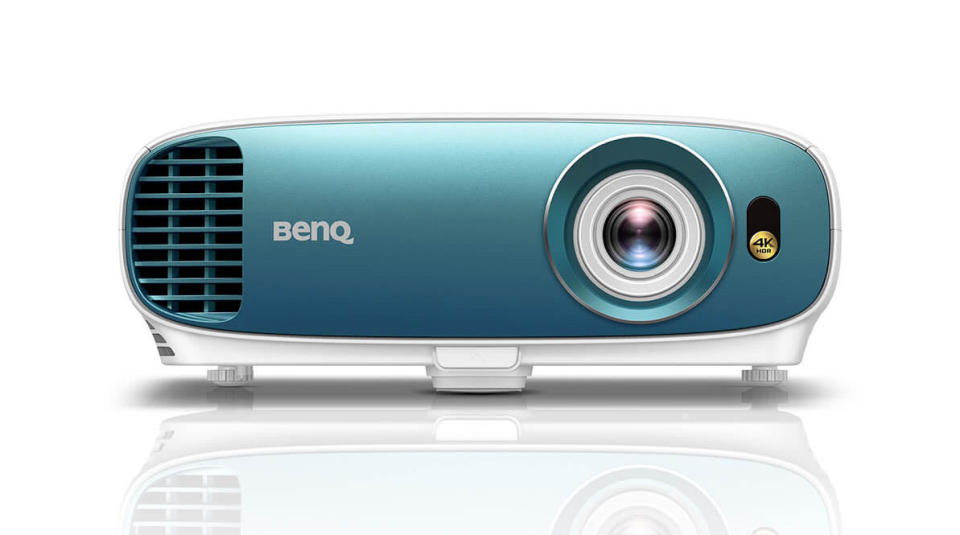
If it's brightness you need for sports or gaming and budget is an issue, take a look at BenQ's $1,300 TK800M. It's essentially a brighter version of the HT3550, but uses a different RGBW, instead of RGBRGB color wheel. That yields inferior color reproduction but much better 3,000 lumen peak brightness. Combined with the sub-10 pound weight and high-quality built-in speaker, it would make a good projector to use for a movie night under the stars. It's also got decent 40-millisecond input lag for gaming. The drawbacks are slightly inaccurate colors and some fan noise.
BenQ TK800M on Amazon - $1,292
Under $6,000: JVC DLA-NX5
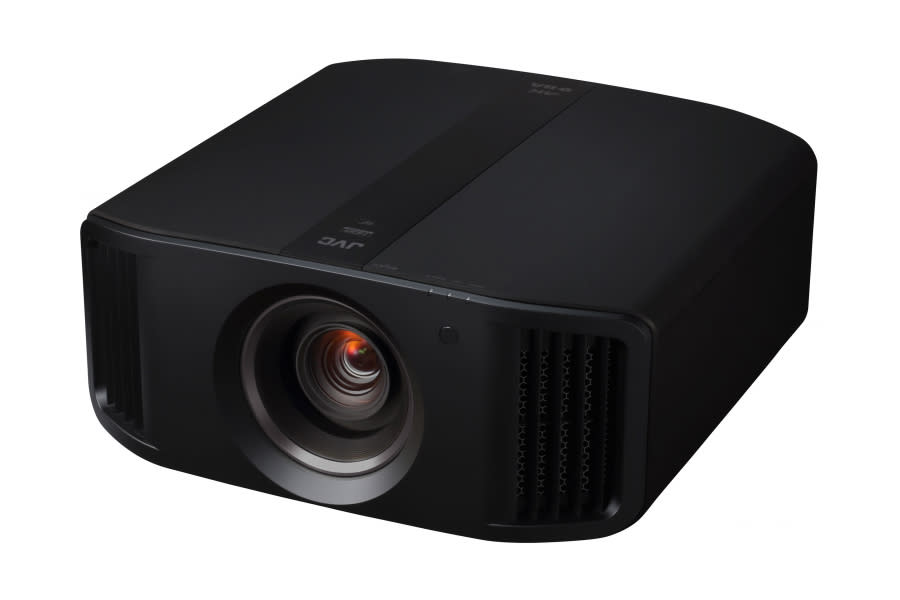
If you have money, JVC makes the best projectors out there for home theater connoisseurs. Seeing the $5,000, 4K JVC DLA-NX5 next to other projectors we've discussed would make that clear. With a true 4K panel, it has an astounding 21,494:1 ANSI contrast ratio, thanks to the company's proprietary D-ILA liquid crystal on silicon and dynamic iris tech. At the same time, it delivers a bright image and unmatched color accuracy. The drawbacks are the price and huge 45 pound weight.
JVC DLA-NX5 on Amazon - $5,000
Under $6,000: Epson Home Cinema 5050UB
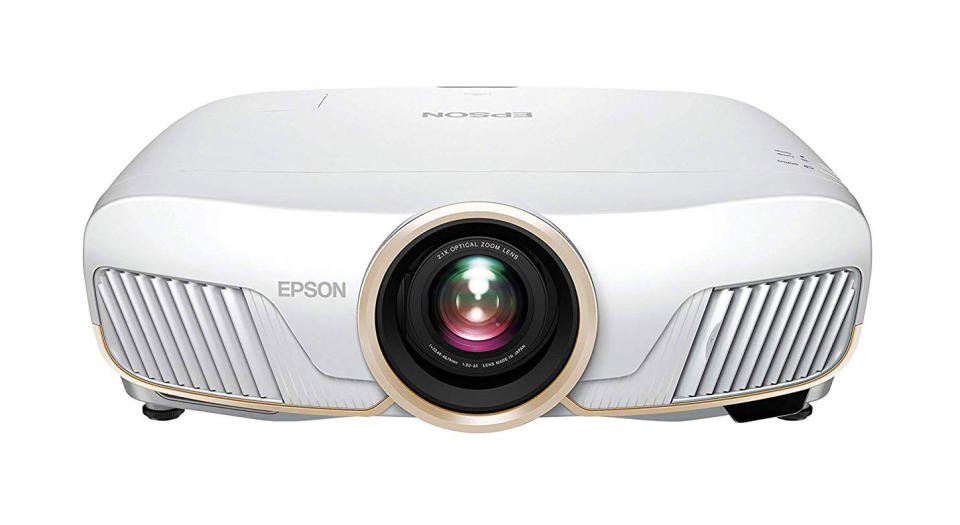
The 4K Epson Home Cinema 5050UB is a $3,000 gateway into the world of high-end projectors, with features like a motorized lens with zoom and pixel shift for easy setup. The 3LCD chipset delivers some of the best color accuracy, contrast and brightness out there, and better 3D than any DLP model. Unfortunately, where cheaper DLP projectors output a full 4K image to the screen, Epson models are still only equipped with a 1080p chip that's pixel-shifted just twice.
Epson Home Cinema 5050UB on Amazon - $2,800
Under $6,000: LG CineBeam HU85LA
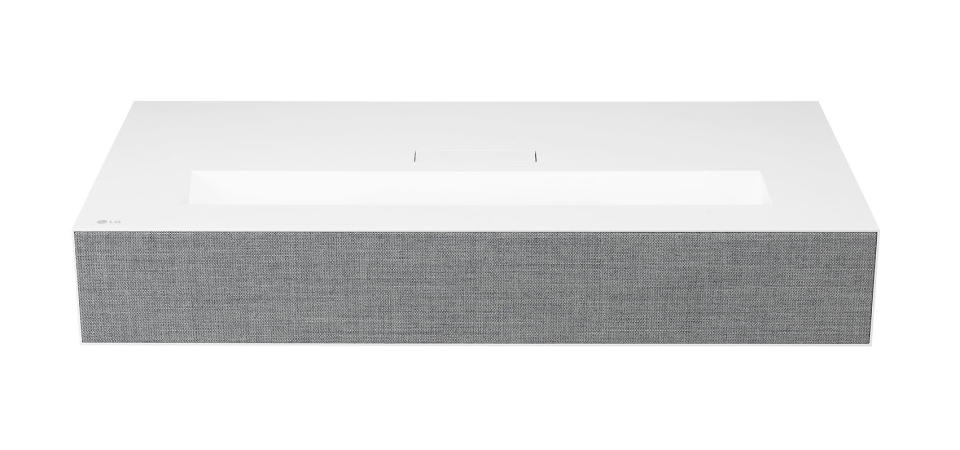
The coolest, and weirdest projector out there has to be LG's very short throw $6,000 CineBeam HU85LA model. As we saw this year at CES, it lets you set up the projector right next to the screen as if it was just a set-top box or other component. Thanks to a DLP chip and 3-channel laser light source that negates the need for a color wheel, it pumps out 2,700 ANSI lumens of brightness without any rainbow effect. It also delivers a pixel-shifted 4K image and HDR. (Optoma just launched a similar projector at a much lower price, the CinemaX P1, which looks good on paper, but we haven't been able to test it yet.)
LG CineBeam HU85LA on Amazon - $5,997
ENGADGET'S GUIDE TO HOME ENTERTAINMENT
